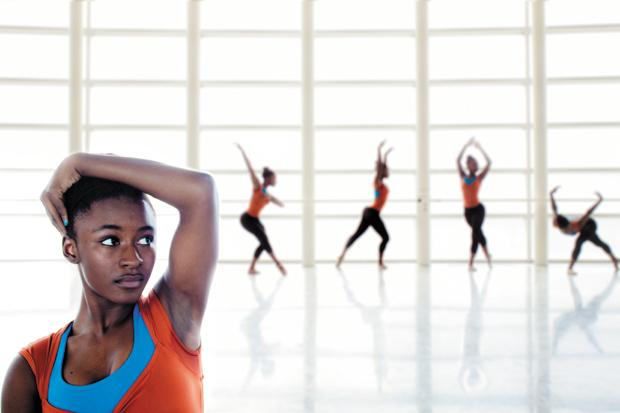Introductory post looks at Webster University exhibit
Published June 27, 2012
For Abigail Schaefer, one of 11 photographers in the exhibition “Raison d’etre: Reason To Be” at the May Gallery on the campus of Webster University, communication is very important. That angle applies to the show as a whole. Despite their differences, each artist possesses a talent for achieving communication between subject and viewer.
Each of Sherry Canono’s pieces feature a pair of photographs of the same person. In each pair, the subject wears different clothes and strikes two varied poses. One pair features a picture of a man in a suit with the jacket thrown over his shoulder. He smiles affably at the viewer. In the other picture, he wears jeans, sneakers, and a colorful shirt. He crouches casually and looks at the viewer with an inquisitive expression. The two photographs may represent two distinct personalities of the same subject; or they may tell a story about the person in two separate aspects of his life.
ADVERTISEMENT
Colleen Doherty’s skill lies in her beautiful shots of cities like New York, and in portraiture. In one picture, the city at night sparkles like an enormous jewel and Doherty provides us a bird’s-eye view. A photograph of a woman weaving with a child on her back suggests that in her world, childcare blends in seamlessly with everyday chores. Doherty uses photography to tell her stories and those of others, and to share the wonderful diversity of many cultures.
Like Doherty, Katherine Lawless photographs scenes of everyday life in various countries. Her repertoire includes Bhutan, Cambodia, Laos, Nepal, and Vietnam, and her photographs depict slices of life: a man working with raw meat; Buddhist prayer flags; boats on a river or lake. Lawless enjoys travel and has taught English as a second language. For Lawless, photography is social documentation.
Daniel Movitz’s pieces encompass a wide range of subjects, from people to birds to landscapes. In one thought-provoking picture, a dancer in the foreground of a dance studio throws her left arm over her head. Though she faces the viewer, her eyes look up to the left. In the background to her left, she appears four more times in assorted ballet positions. The piece conveys a thoughtful, introspective, perhaps wistful feeling.
“Types” predominate in Abigail Schaefer’s portraits. But one look at the subjects, particularly two photographs of two different punk girls, reveals much more than what’s on the surface. One girl, photographed from above, sits with her eyes closed. The softness of her face belies her dark clothes and tattoo. The other girl, with teased, red-dyed hair, stares directly at the viewer, unapologetic for what some might consider her odd appearance. Both girls hold strong visual conversations with the viewer.














